Showa 12.10 Kokubunji Type
14 Photos (A)
This Showa 12.10 (October,
1942) Type 14 was my second with that date. I bought it from a dealer in
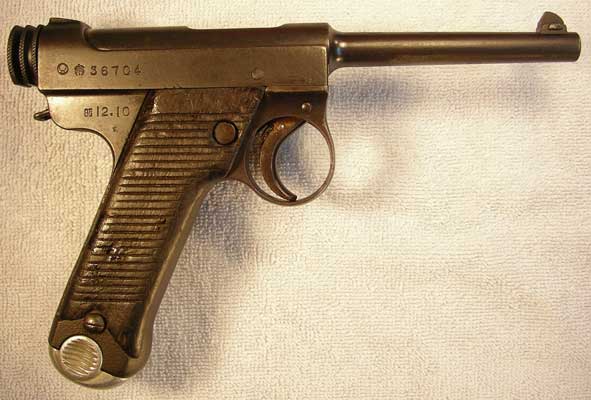
Here is the left side.
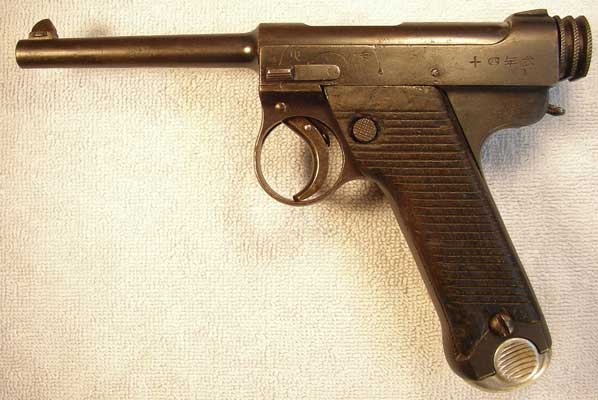
This photo shows the markings on the
right side of the frame. The first symbol means Nagoya Arsenal. The second
symbol is the kanji character nan (or nam), the
first character in the name of the designer, Lt. General Kijiro Nambu.
Nambu had taken early retirement and founded the Nambu Rifle Manufacturing
Company, which later merged with two other companies to become Chuo Kogyo, the
largest private small arms manufacturer in
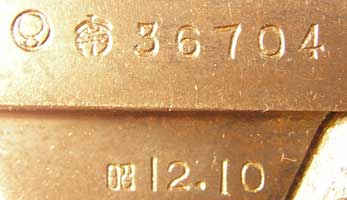
The production date 12.10 in the
photo below means the tenth month of the twelfth year of Emperor Hirohito’s
reign, which translates to October, 1937. The character in front of the date is
Sho, short for Showa, the name for Emperor Hirohito’s reign. The small character stamped below the decimal
point in the date is the kanji to as
in
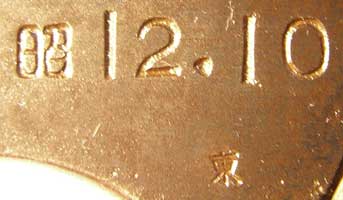
The magazine number does not match.
What struck me is how smooth the normally crisp edges of the finger grip on the
magazine base had been worn. I had not seen one with that much wear on the
edges before. It seems to work fine, though.
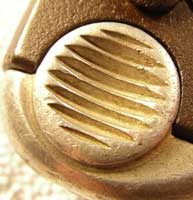
The
number on the cocking knob that came with the gun did not match (it should have
had the last three digits of the gun’s serial number on it). More importantly,
however, it was not quite the right kind of knob. The one on the right is the
one that came with the gun. The one on the left is the one that I put on it to
bring it back into correct configuration. You will notice that the knurling on
the cocking knob on the right is finer than on the one on the left. The finer
knurling was introduced in Showa 13.12 (December, 1938), for no apparent
reaason.
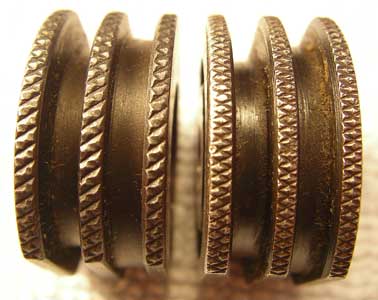
Here is the front face of those two
knobs. The earlier one with the coarse knurling that is now on the gun is on
top, the later one with the finer knurling that came on it when I got it is on
the bottom.
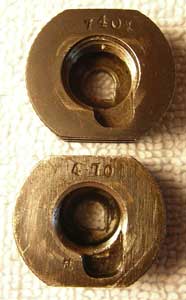
A closer look at the bottom one
shows that it has the kanji sha, as
in kaisha (=company) used as an
inspection mark. This mark was not used until 1941, and then continued to be
used until Chuo Kogyo ceased production of Type 14s in 1944. The sha mark was another sign the knob was
not the right one for this pistol.
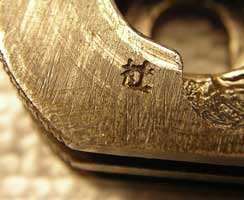
The earlier knob I installed on the
pistol has the kanji to (as in

Under the barrel there are the
remains of an English inscription that someone has tried to remove. It is
mostly illegible, but the last word in the second line seems to be “

Under the grips on the frame of many
Type 14s there is often a lot of pitting and corrosion from the salty sweat of
the user’s hand being held against the metal by the wood. This one has probably
the worst corrosion of this type that I have seen. Fortunately it does not show
once the grips are installed.
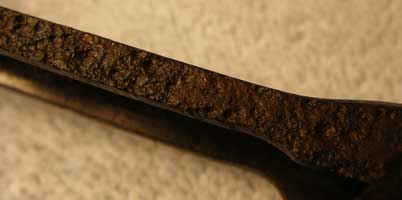
The grips are somewhat loose due to
shrinkage of the wood, among other factors. Someone obviously tried to remedy
this by applying epoxy to keep them from jiggling, but unsurprisingly glue
could not permanently bond corroded metal to oil-soaked wood. I removed the
residue of this failed effort quite easily with a soft brass tool I made. It
came off in nice little chunks.
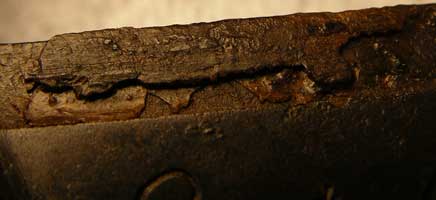
Another typical corrosion spot is
the lanyard loop area, where the cotton cord also held moisture against the
metal. This pistol has a typical amount of corrosion in this area.
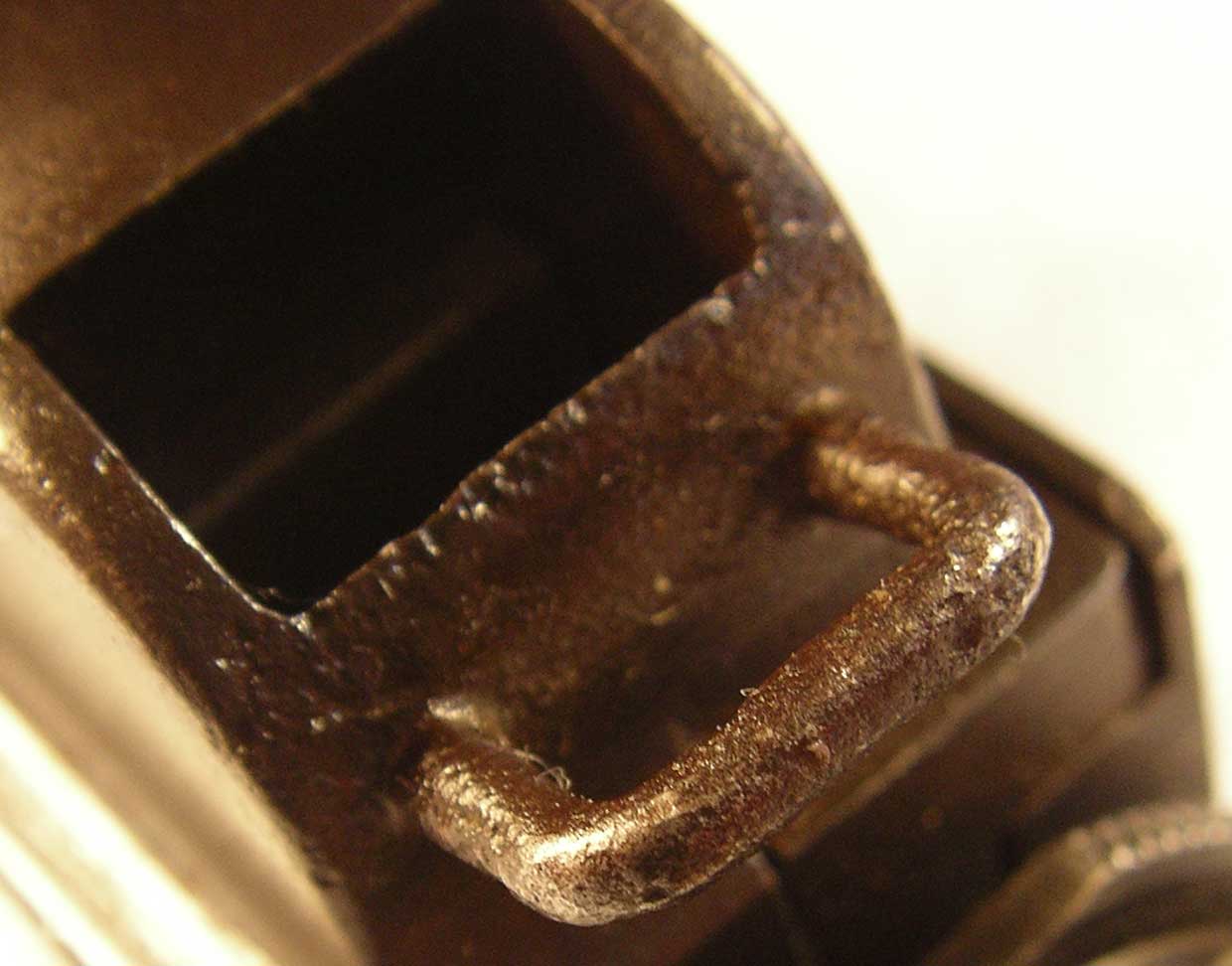
Click here to go back to the Type 14 Photo
Gallery: Teri's Japanese Handgun
Website: Type 14 Photo Gallery
Click here to go back to the main page: Teri’s Japanese Handgun Website
Last updated: September 19, 2005. All contents are copyright Teri unless otherwise
specified and may not be used elsewhere in any form without prior permission.